On Wednesday, markets responded to a mix of weak economic data, rising geopolitical risks, and shifting central bank expectations.
The euro fell below $1.14 following soft Eurozone inflation and political uncertainty in the Netherlands, while the yen stabilized around 143.9 as investors awaited U.S. and Japanese data. Gold and silver rose on renewed safe-haven demand driven by global tensions and fresh U.S. tariffs. Meanwhile, the pound remained steady ahead of key central bank meetings. Across the board, cautious sentiment and policy speculation shaped trading activity.
| Time | Cur. | Event | Forecast | Previous |
| 12:15 | USD | ADP Nonfarm Employment Change (May) | 111K | 62K |
| 08:00 | EUR | HCOB Eurozone Services PMI (May) | 48.9 | 50.1 |
| 13:45 | CAD | BoC Interest Rate Decision | 2.75% | 2.75% |
| 14:00 | USD | ISM Non-Manufacturing PMI (May) | 52.1 | 51.6 |
| 14:00 | USD | ISM Non-Manufacturing Prices (May) | 65.1 | |
| 14:30 | USD | Crude Oil Inventories | -2.795M |
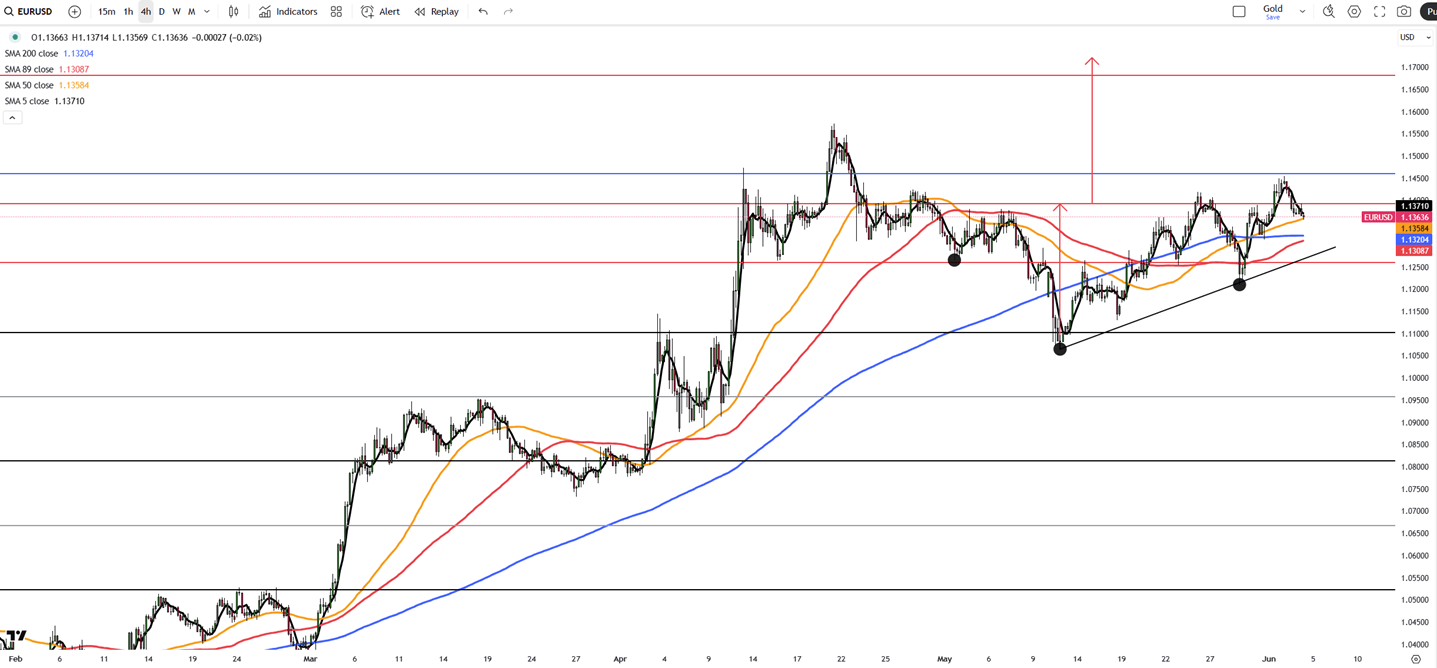
The euro dropped under $1.14 after Eurozone CPI for May rose only 1.9% y/y, missing the 2.0% forecast. This supported expectations of a 25 bps ECB rate cut. The OECD also cut global growth projections to 2.9% for 2025–26, citing trade tensions. Dutch political instability, following a government collapse over immigration, added pressure. Meanwhile, U.S. trade negotiations stayed in focus after Trump’s renewed tariff threats.
The key resistance is located at 1.1460 and the first support stands at 1.1320.
| R1: 1.1460 | S1: 1.1320 |
| R2: 1.1500 | S2: 1.1260 |
| R3: 1.1580 | S3: 1.1210 |
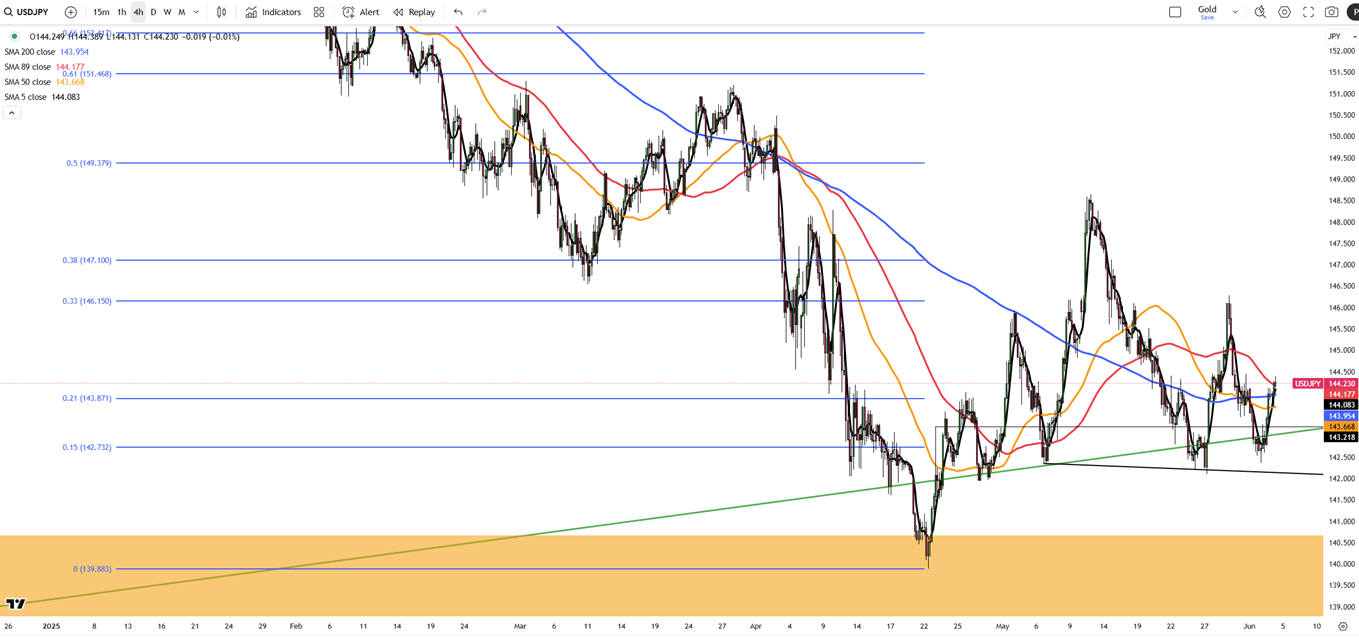
The yen steadied at 143.9 per dollar after recent losses, helped by a weaker U.S. dollar. Caution dominated ahead of U.S. jobs data. BoJ Governor Ueda reiterated rate hike readiness if inflation targets are met, backed by a modest economic rebound and strong corporate earnings. Markets now await Japan’s labor and spending figures.
The key resistance is at $144.40 meanwhile the major support is located at $143.50.
| R1: 144.40 | S1: 143.50 |
| R2: 144.70 | S2: 143.00 |
| R3: 146.10 | S3: 142.20 |
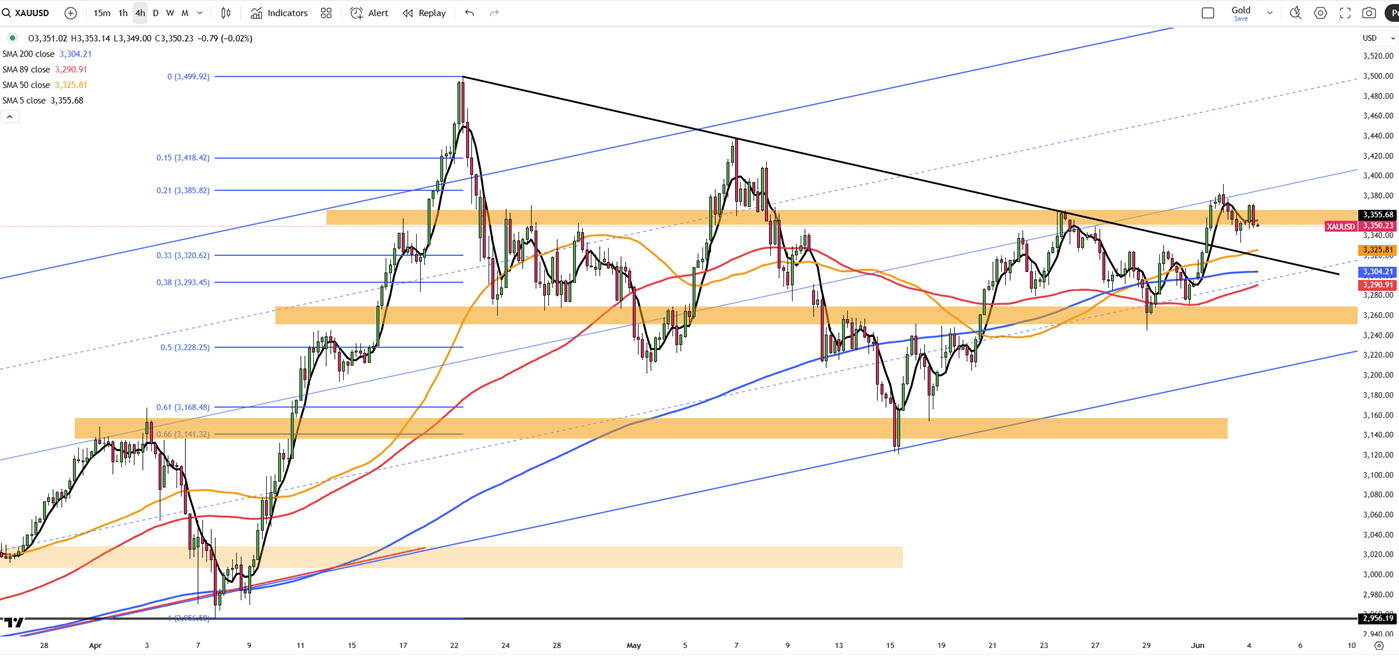
Gold rose toward $3,370 as demand returned with heightened geopolitical and trade risks. The OECD trimmed its global growth forecast, citing weak manufacturing and U.S.-China tensions. New U.S. tariffs on steel and aluminum fueled concerns ahead of a potential Trump-Xi meeting. Meanwhile, the Ukraine conflict and Iran’s likely rejection of a U.S. nuclear offer added to market unease.
The first critical support for gold is seen at $3320 and the first resistance is located at $3385.
| R1: 3385 | S1: 3320 |
| R2: 3435 | S2: 3290 |
| R3: 3500 | S3: 3250 |
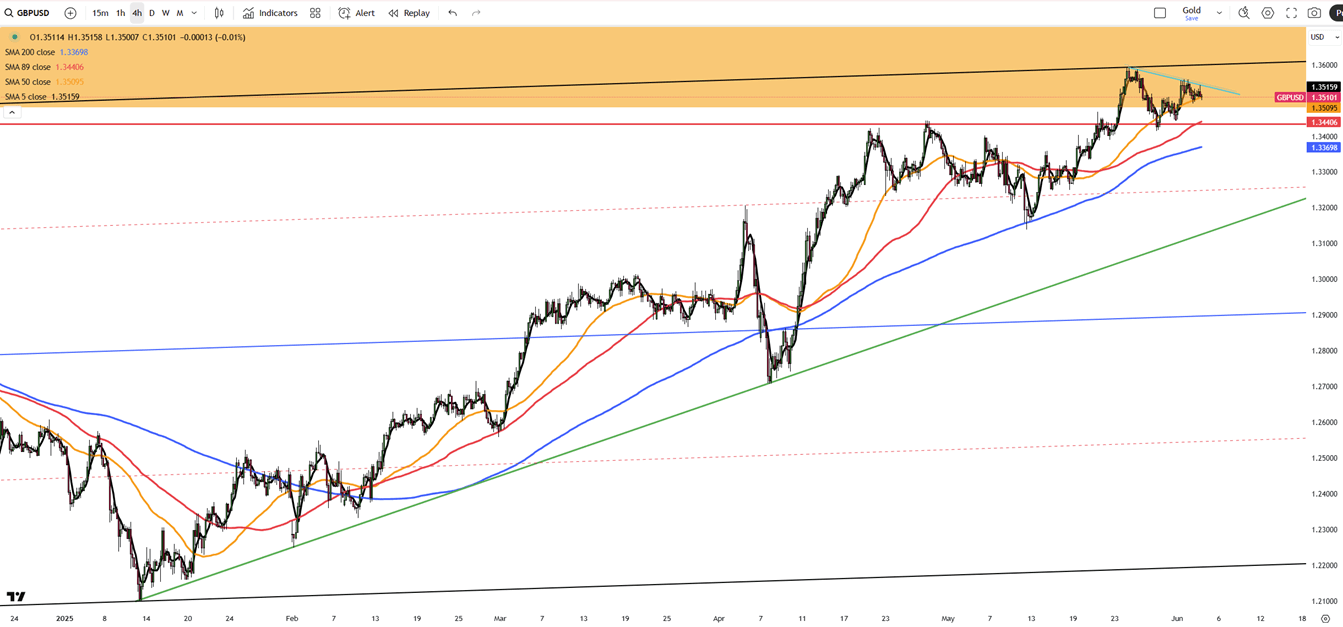
The pound traded around 1.3520 against the dollar as investors awaited U.S. economic data and the June 19 BoE meeting, which may include rate cuts. With no major UK releases, GBP/USD remains sensitive to central bank signals and global economic uncertainty.
The first critical support for the pair is seen at 1.3425 and the first resistance is located at 1.3600.
| R1: 1.3600 | S1: 1.3425 |
| R2: 1.3750 | S2: 1.3165 |
| R3: 1.3850 | S3: 1.2890 |
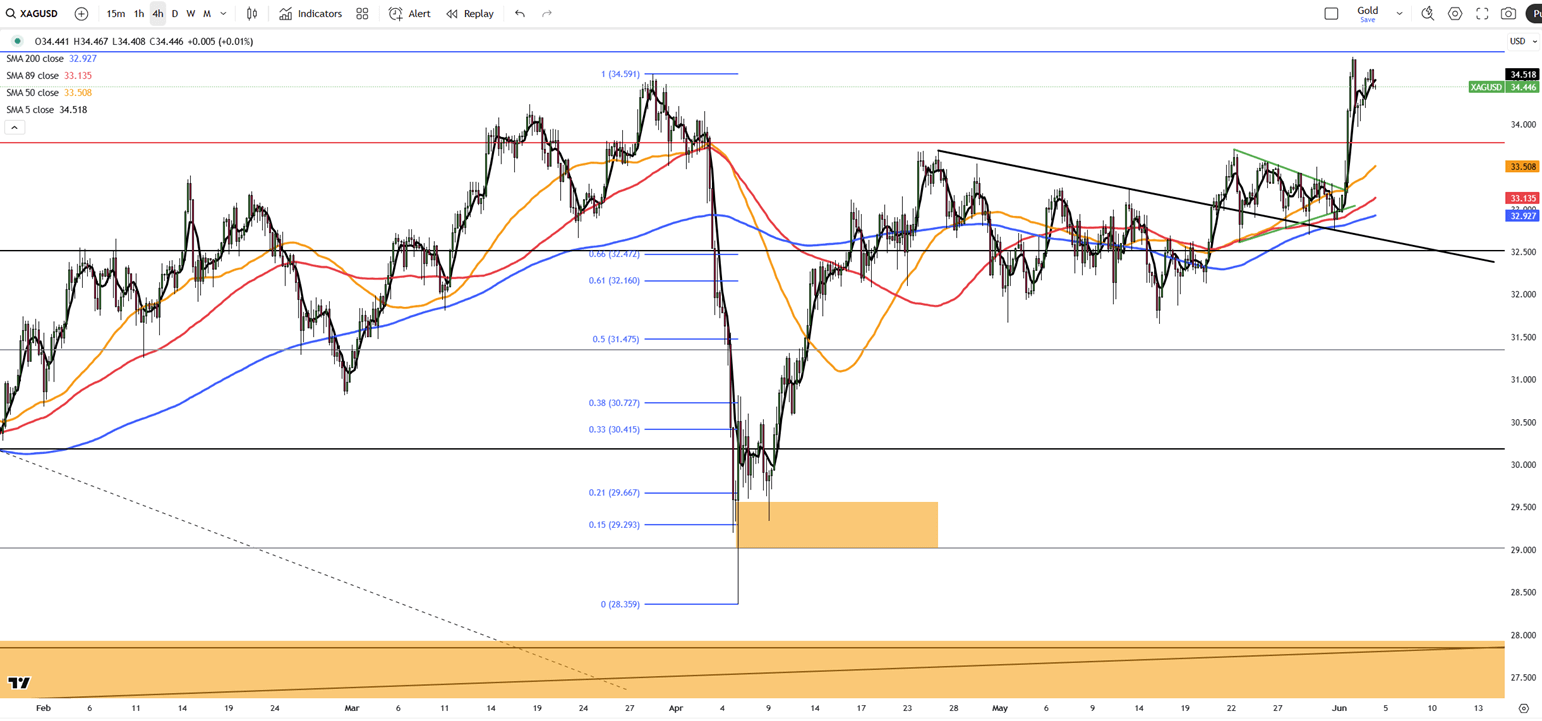
Silver rose toward $34.60, driven by safe-haven flows amid rising global risks and trade tensions. The OECD’s downgraded growth outlook and new U.S. tariffs intensified market volatility. Continued conflict in Ukraine and the Middle East, plus resilient demand from industrial sectors, supported gains. The gold-to-silver ratio remains elevated, hinting at further upside.
The first critical support for silver is seen at 33.65 and the first resistance is located at 34.90.
| R1: 34.90 | S1: 33.65 |
| R2: 35.40 | S2: 32.80 |
| R3: 36.00 | S3: 32.50 |
 Bond Market Pushback Takes Center Stage
Bond Market Pushback Takes Center StageMarkets are almost fully pricing in another Federal Reserve rate cut this week, yet the US bond market continues to move in the opposite direction.
Detail Central Bank Expectations Reset the Tone (8-12 December)
Central Bank Expectations Reset the Tone (8-12 December)Traders adjusted positioning before the Federal Reserve’s December decision and evaluated fresh signals from the ECB, BoE and BOJ.
Detail Futures Stall, 10-Year Yield Pushes Above 4.1% (12.08.2025)US stock futures were flat on Monday ahead of the Fed’s meeting, with markets pricing an 88% chance of a 25 bp cut on Wednesday.
DetailThen Join Our Telegram Channel and Subscribe Our Trading Signals Newsletter for Free!
Join Us On Telegram!